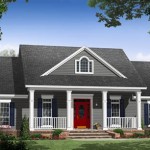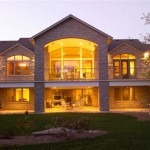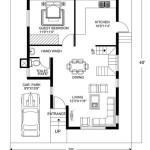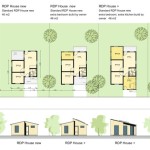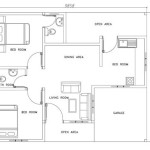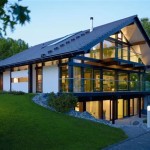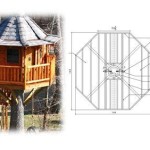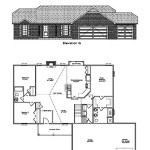Small Mountain Cabin House Plans: Designing Your Retreat
The allure of a small mountain cabin stems from its promise of solace, a connection with nature, and escape from the complexities of modern life. Designing such a retreat requires careful consideration of space, functionality, and the surrounding environment. Small mountain cabin house plans are more than blueprints; they are roadmaps to creating a personalized sanctuary. This article explores key considerations, design features, and practical elements involved in planning a small mountain cabin.
Understanding the Context: Mountain Environment and Building Codes
Before even considering specific floor plans, it is imperative to thoroughly understand the unique challenges and opportunities presented by a mountain environment. Mountain regions often experience extreme weather conditions, including heavy snowfall, strong winds, and significant temperature fluctuations. These factors directly influence the choice of building materials, the design of the roof, and the insulation level required to maintain comfortable interior temperatures.
Local building codes and regulations also play a crucial role. Many mountain communities have specific requirements related to fire safety, environmental protection, and architectural aesthetics. Some areas may restrict building heights, require setbacks from property lines, or mandate the use of specific materials that blend with the natural landscape. Compliance with these regulations is essential not only for legal reasons but also to ensure the long-term durability and sustainability of the cabin.
Site selection is another critical aspect. The topography of the land, the availability of sunlight, the proximity to water sources, and the potential for scenic views should all be carefully evaluated. A sloped site, for example, may require a different foundation design than a flat one. Similarly, the orientation of the cabin can impact its energy efficiency by maximizing solar gain in the winter and minimizing heat absorption in the summer. A professional site survey is highly recommended to provide accurate information about the land's features and potential challenges.
Maximizing Space and Functionality in Small Cabin Designs
Small mountain cabins are, by definition, limited in square footage. Therefore, efficient space utilization and functional design are paramount. Every square inch must be carefully considered to ensure that the cabin meets the needs of its occupants without feeling cramped or cluttered.
Open floor plans are a common feature in small cabin designs. By eliminating unnecessary walls, living areas, dining areas, and kitchens can flow seamlessly into one another, creating a sense of spaciousness. Strategic placement of furniture and thoughtful use of lighting can further enhance this effect. Multi-functional furniture, such as sofa beds, storage ottomans, and folding tables, can also help to maximize space and provide flexibility.
Vertical space is another often-overlooked asset. Lofts can be used as sleeping areas, storage spaces, or even small home offices. High ceilings can make a room feel larger and more airy. Built-in storage solutions, such as bookshelves, cabinets, and drawers, can also help to minimize clutter and keep the cabin organized. Consider incorporating features like window seats with built-in storage underneath, or utilizing the space under stairs for shelving or closets.
The kitchen is often the heart of a cabin, even a small one. Efficient kitchen layouts, such as galley kitchens or L-shaped kitchens, can maximize counter space and storage within a limited area. Compact appliances, such as apartment-sized refrigerators and combination microwave-convection ovens, can also help to save space. A well-designed kitchen should be both functional and aesthetically pleasing, providing a comfortable space for preparing meals and socializing.
Bathrooms in small cabins typically need to be compact and efficient. A shower instead of a bathtub can save significant space. Wall-mounted sinks and toilets can also help to create a more open and airy feel. Maximizing natural light in the bathroom can also make it feel larger and more inviting. Consider incorporating features like a skylight or a small window to bring in natural light and ventilation.
Essential Design Features for Mountain Cabins
Beyond maximizing space, specific design features are particularly well-suited for mountain cabins. These elements enhance the cabin's aesthetic appeal, functionality, and connection to the surrounding natural environment.
A prominent feature of many mountain cabins is a large stone fireplace. A fireplace provides not only a source of heat but also a focal point for the living area. The use of natural stone in the fireplace design can further enhance the cabin's rustic charm and connection to the surrounding landscape. Consider incorporating a wood-burning stove as an alternative or supplement to a traditional fireplace. Wood-burning stoves are highly efficient and can provide a significant amount of heat for a relatively low cost.
Porches and decks are another essential element of mountain cabin design. These outdoor spaces provide a transition between the interior and exterior, allowing occupants to enjoy the scenery and fresh air. A covered porch can provide shelter from the sun and rain, while a deck can offer a larger space for outdoor dining and lounging. Consider designing the porch or deck to take advantage of the best views from the property. Incorporating features like built-in seating, outdoor fireplaces, or hot tubs can further enhance the enjoyment of these outdoor spaces.
Large windows are crucial for bringing natural light into the cabin and framing the surrounding views. The placement of windows should be carefully considered to maximize solar gain in the winter and minimize heat absorption in the summer. High-performance windows with low-E coatings can help to improve energy efficiency. Consider incorporating features like skylights or clerestory windows to bring in additional natural light. Window placement also affects privacy, so consider obscuring windows that face neighboring properties or roads.
The exterior materials used in a mountain cabin should be durable, weather-resistant, and aesthetically pleasing. Natural materials, such as wood, stone, and metal, are often preferred for their rustic charm and connection to the surrounding landscape. Log siding, wood shingles, and stone veneer are common choices for exterior cladding. Metal roofing is also a popular option for its durability and fire resistance. Consider incorporating features like exposed beams, wooden trim, and natural stone accents to enhance the cabin's rustic aesthetic.
Insulation is absolutely critical in mountain cabins due to the extreme temperature fluctuations. High levels of insulation in the walls, roof, and floor can help to maintain comfortable interior temperatures and reduce energy consumption. Consider using eco-friendly insulation materials, such as recycled denim or sheep's wool. Proper sealing of air leaks is also essential for preventing drafts and reducing energy loss. A well-insulated and properly sealed cabin will be much more comfortable and energy-efficient.
Water management is another important consideration in mountain environments. Proper drainage is essential for preventing water damage to the cabin's foundation and surrounding landscape. Consider installing gutters and downspouts to direct rainwater away from the building. A French drain or other drainage system may be necessary to manage groundwater. In areas with heavy snowfall, consider designing the roof to minimize the risk of ice dams. Water conservation measures, such as low-flow toilets and showerheads, can also help to reduce water consumption.
Interior design should complement the cabin's rustic aesthetic and functional layout. Natural materials, such as wood, stone, and leather, can be used to create a warm and inviting atmosphere. A neutral color palette can help to create a sense of spaciousness and tranquility. Consider incorporating features like exposed beams, wooden trim, and natural stone accents to enhance the cabin's rustic charm. Furnishings should be comfortable, durable, and appropriately scaled for the size of the cabin. Avoid clutter and strive for a simple, uncluttered aesthetic.
Designing a small mountain cabin requires a holistic approach, considering both the practical needs of the occupants and the environmental context. By carefully considering these factors, potential cabin owners can create a small mountain cabin that provides a comfortable, functional, and aesthetically pleasing retreat for years to come.

Small Mountain Cabin Plan By Max Fulbright Designs Floor Plans House

Casa Pequena Mountain Cabin Plans House Sims
:max_bytes(150000):strip_icc()/whisper-creek-b65299d0def24eb28d88f38f7581e118.jpg?strip=all)
25 Best Mountain House Plans For Your Vacation Home

Small Cabin Designs With Loft Floor Plans

Small Cabin Designs With Loft Floor Plans

Small Mountain House Plans Houseplans Blog Com

Wonderful 1000 Ideas About Small Modern House Plans On Cottage At Base Of Squak Mountain W Cabin Design

Small Cabin House Plans With Loft And Porch For Fall Houseplans Blog Com

Mountain Cabin Modern Log House Plans Small Swoon

Small Mountain House Plans Houseplans Blog Com

